Download PDF
Download page How to use Handy Status.
How to use Handy Status
Check out our tips for working with Handy Status
Insert Handy Status
Once you have one or more status sets created in your Confluence instance, you can insert a Handy Status macro and interactively switch between statuses of the selected status set.
- Go to the edit mode.
- Insert the Handy Status macro from the editor toolbar (click Insert more content
 > Handy Status) or by typing { > Handy Status. You can also use a hotkey (Ctrl+Alt+S).
> Handy Status) or by typing { > Handy Status. You can also use a hotkey (Ctrl+Alt+S). - Select the proper status set and status.
- Click Insert.
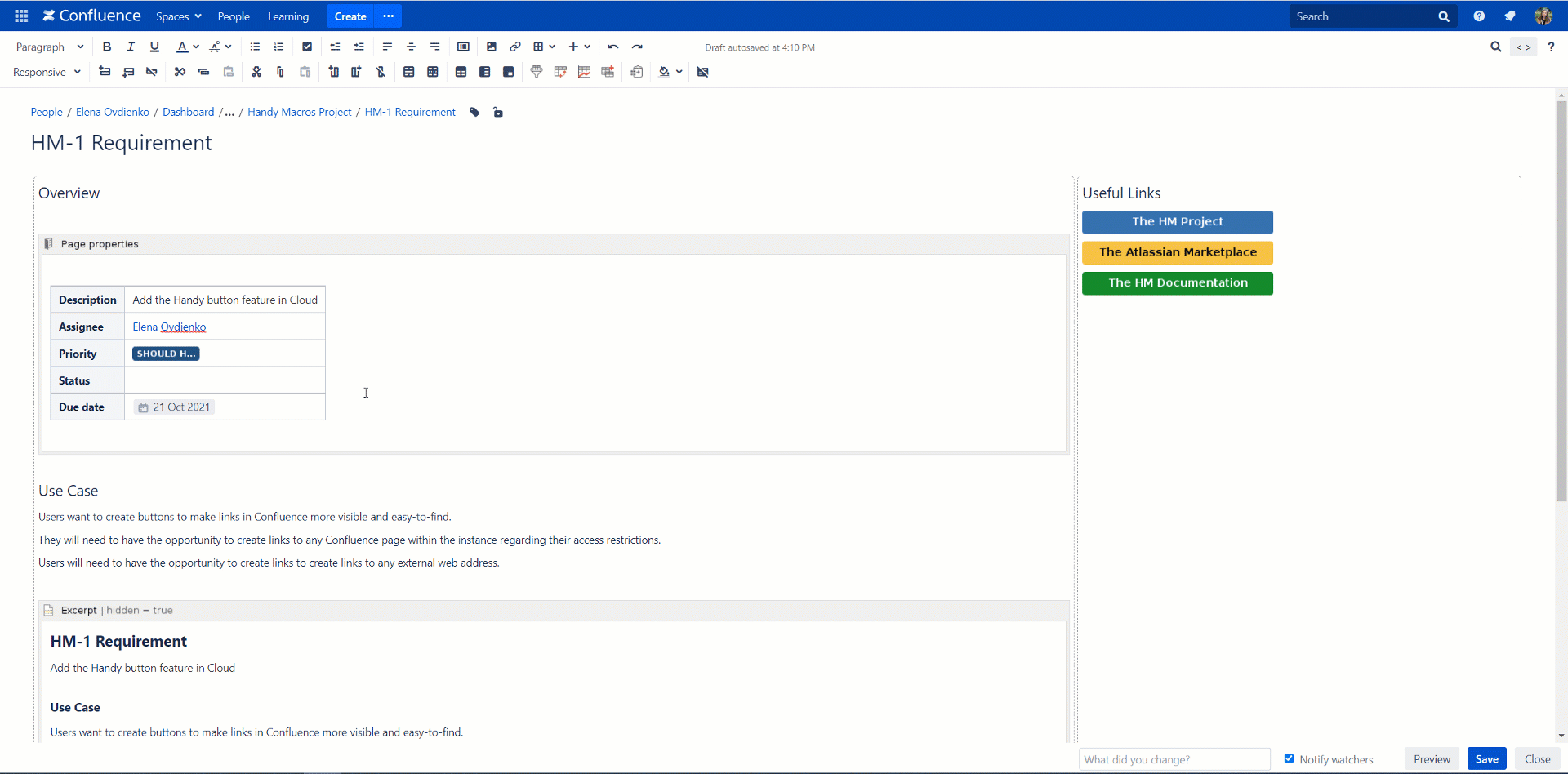
Change Handy Status
In the page view mode
- Click the status when viewing the page. All the statuses from the selected status set will be shown.
- Select a new status.
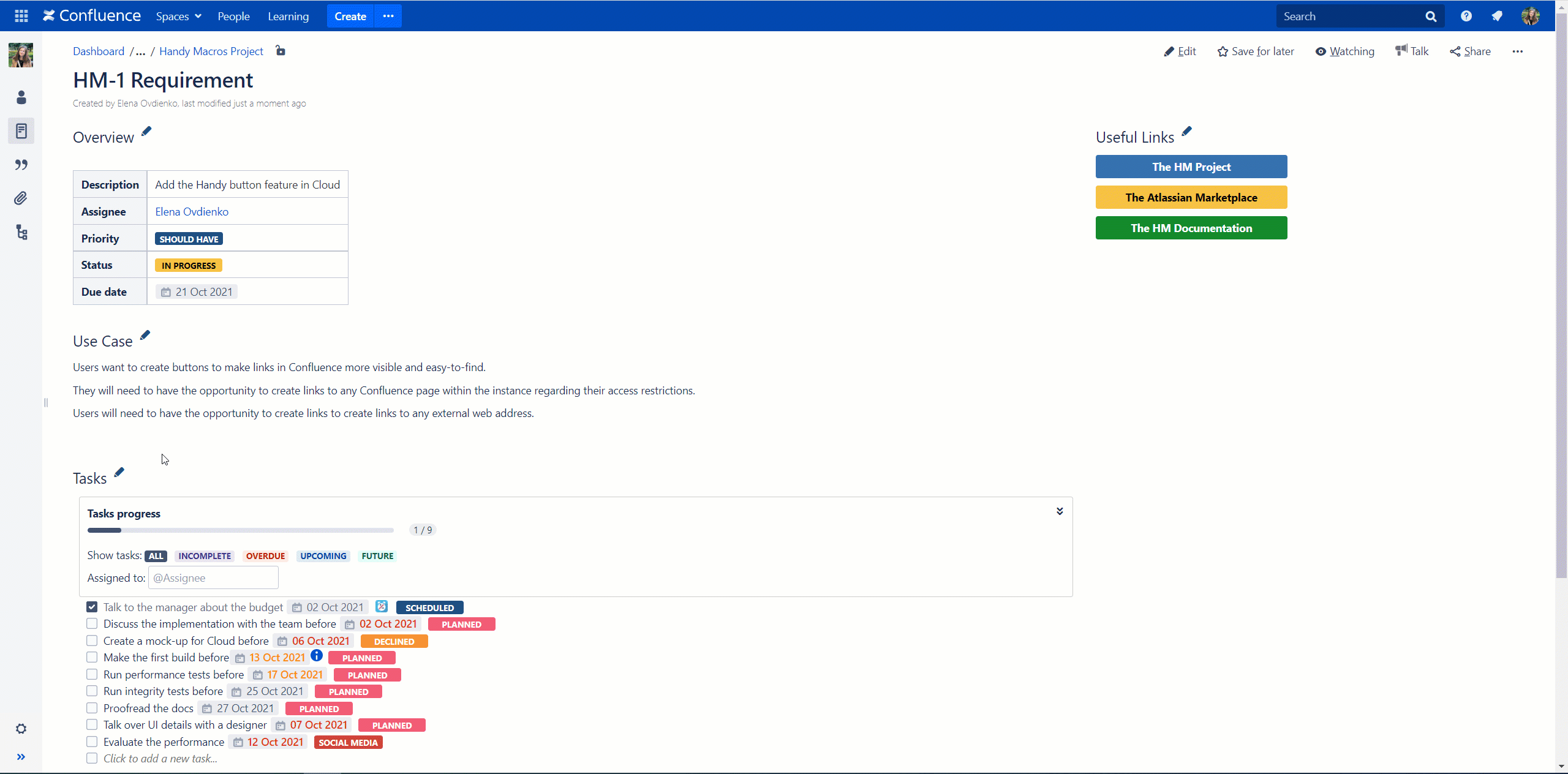
You can't change the status set for the status in the page view mode. This can be done in the page edit mode only.
In the edit mode
- Click the status you want to change.
- Choose the required set and/or status.
- Save the page.
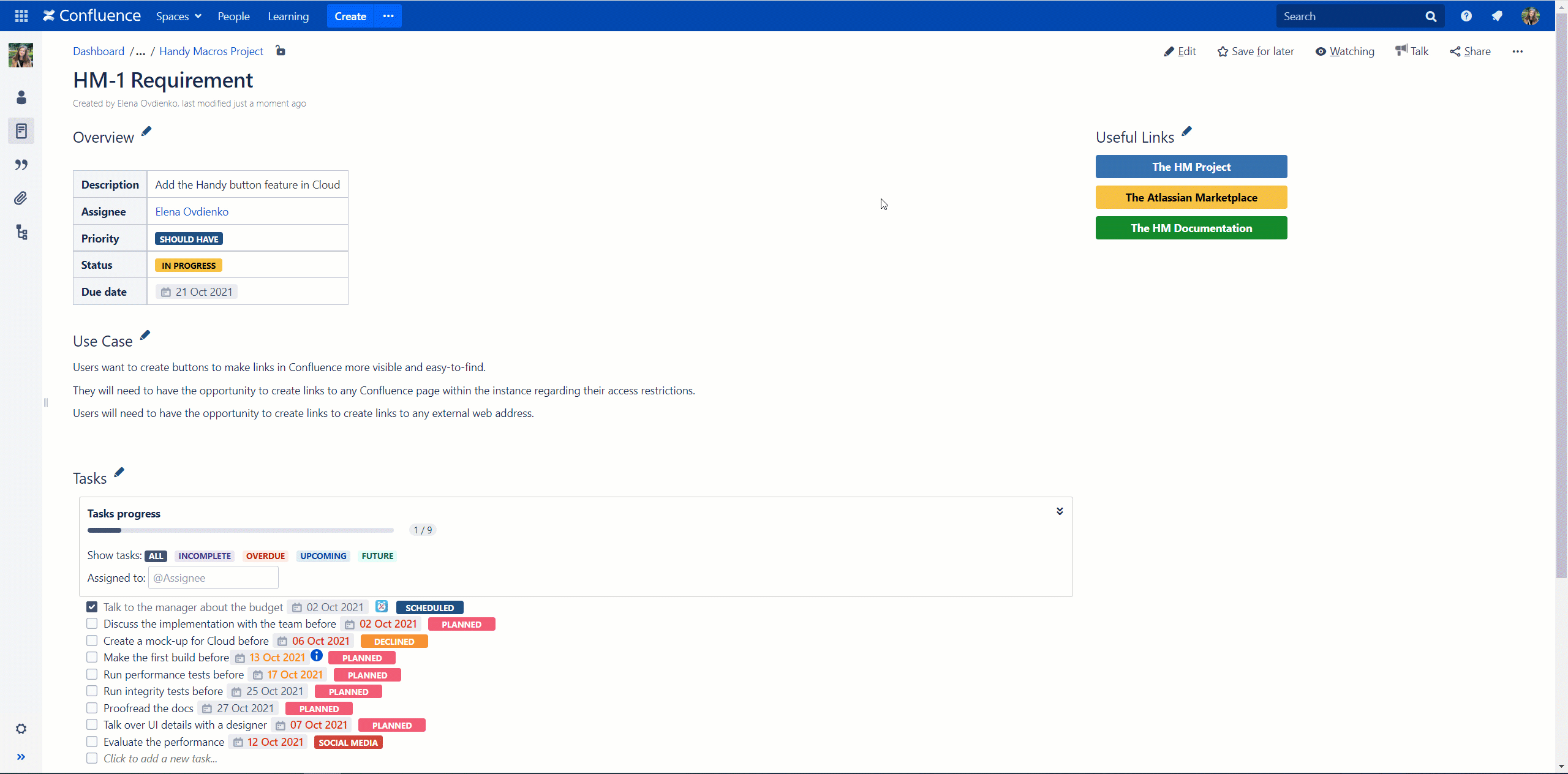
Check out our article with tips for Confluence status management.
Link the status to the page label
Each Handy Status can be linked to the page label. This label will be updated every time you switch the status. It can be configured when you insert Handy Status or edit the Handy Status settings.
You can also use prefixes for labels for better traceability.
- Go to the edit mode.
- Click the status which you want to link to the page label.
- Click Edit.
- Check Synchronize the page label with status.
- Add Label prefix if needed.
- Click Save.
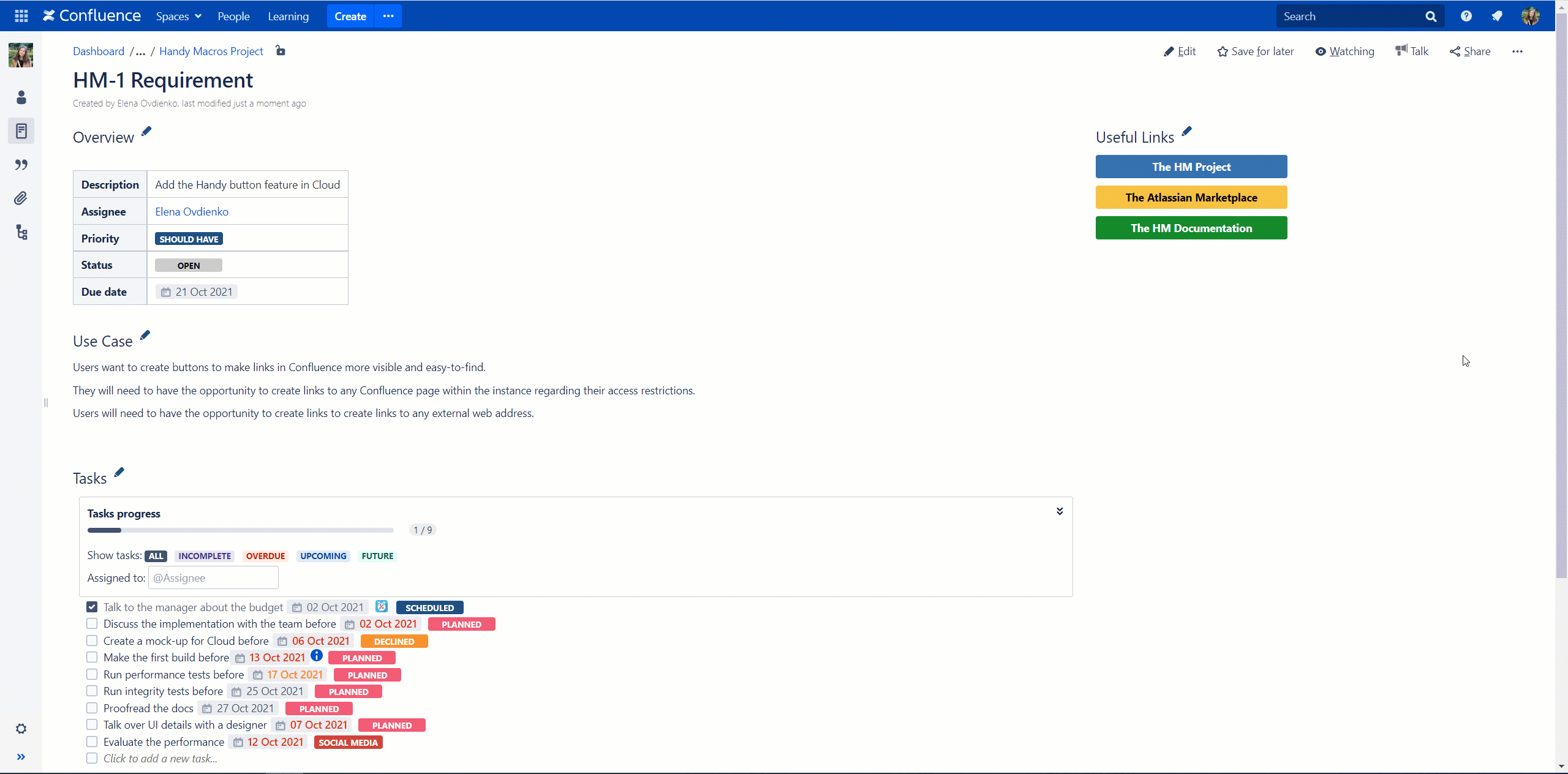
Known issues
- If you use Handy Status with the page label connection in a Confluence template, you need to change the value of Handy Status for the corresponding page label to appear.
- If you have copied an existing Handy Status connected to the label on a Confluence page, you need to change the value of a copied Handy Status for the corresponding page label to appear.
- If you have several statuses from the same status set synced to the page label on a Confluence page, you can see the status labels for certain values missing on a page after some status switches. Here's a detailed guide on how to reproduce the behavior:
- Add three Handy Status macros from the same set to the page. Each status has a separate option, i.e. status 1, status 2, status 3.
- Sync all statuses with page labels.
- See that the page has all three labels added.
- Сhange status 1 to status 2. See the status 1 label is removed, and only the status 2 and status 3 labels remain.
- Change one of the two status 2 statuses back to status 1. See the status 2 label is removed, and the status 1 label is added. There is still a status that is status 2 but there's no such label on a page.
This behavior is caused by the fact that the app removes the label equal to the current status value and adds the label equal to the new status label if the synchronization is enabled. It doesn't check for the presence of other Handy Status macros with the same value on a page. This implementation is used to cover the cases when the Handy Status macros can not be physically present on a page (i.e. in the Page Properties Report macros, Page Excerpt Include macros, and others). The suggested workaround for this case is either not to use Handy Statuses connected to page labels from the same set on the same page or to use pre-fixes for labels (it can be configured in the Handy Status settings when inserting or editing the macro via the macro dialog).
View Handy Status History
In the page view mode
- Hover over the status.
- See the date, time, author, and status value changes.
If you use Handy Status in a Confluence template, the template's creator will appear as the initial Handy Status author in the status history.
In the page history
- Navigate to the menu > Page history.
- Choose two versions of the page to which you want to view the status changes.
- Click Compare selected versions.
- All status changes will be visible alongside other differences between page versions.
Known issues
You can see no status history in a particular case:
- Insert Handy Status on a page.
- Change it several times (status history will be present).
- Copy this Handy Status and paste it on any Confluence page, including the current one.
- Change the value of the second Handy Status (status history will be present).
- Revert the page in the Confluence Page history.
- The first Handy Status will have no history in the reverted page history.
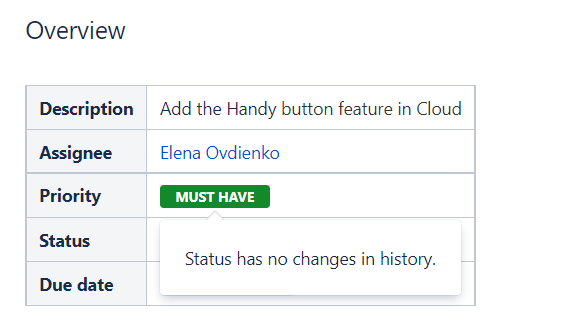
Search for statuses through the pages
You can search for specific statuses on Confluence pages by status name. This feature works both with native statuses and Handy Statuses.
For the correct status lookup on Confluence pages, please perform the full re-indexation of Confluence content.
- Navigate to the Search bar.
- Click Advanced search.
- Click Add a filter.
- Choose Status.
- Specify the status to look up for pages that contain this status.
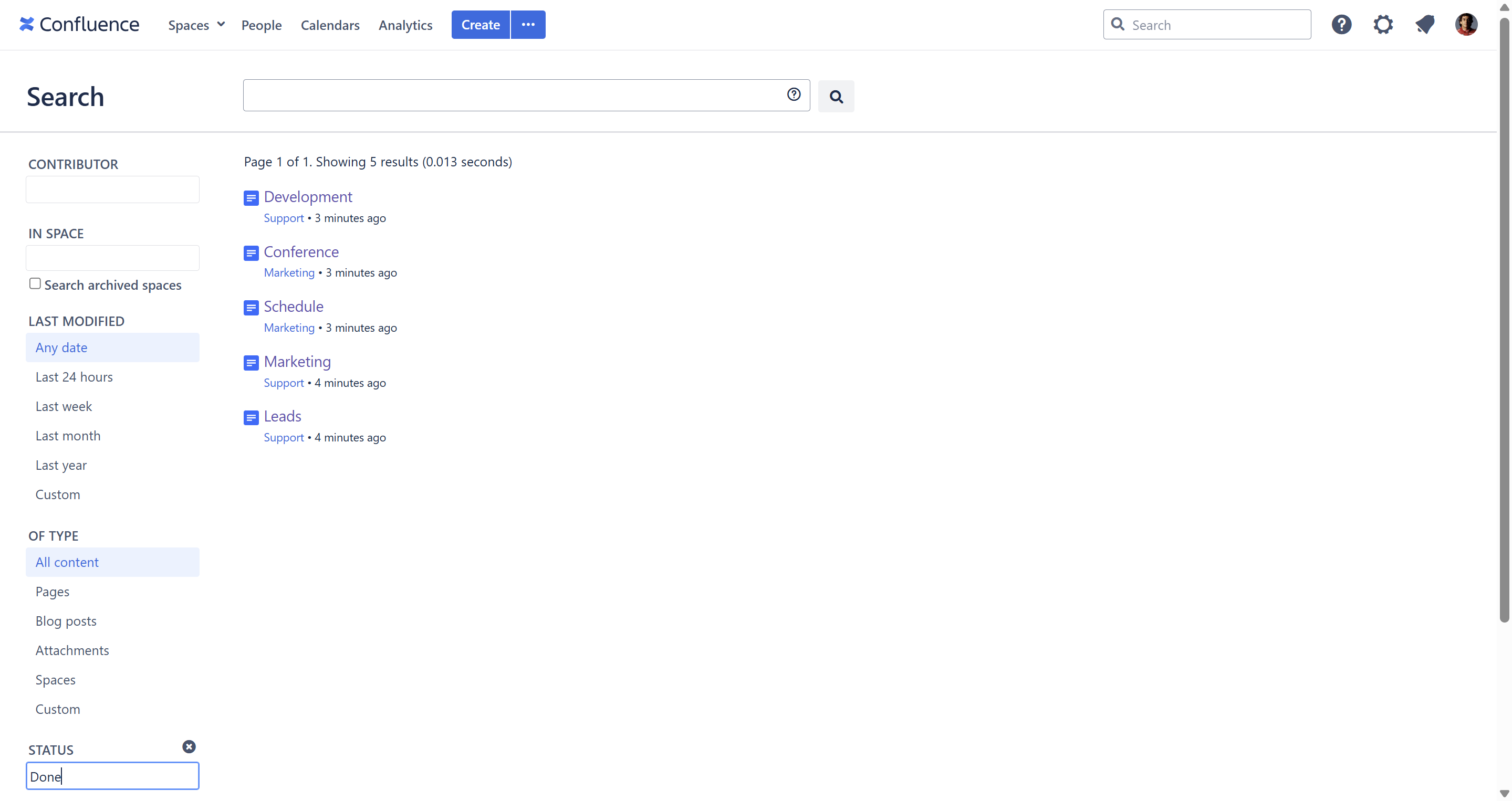
Delete a status or a status set
You can delete a separate status from any set or the whole status set. It can be done at any level (depending on the user's Confluence permissions).
- Navigate to Settings >Apps>Handy Macros.
- Locate the status or status set that you want to delete.
- Click Delete.
- Submit your action by clicking Remove.

Mind that deleted statuses or sets aren't kept in our database. Confluence pages with deleted sets or statuses will have the Unknown status value.
